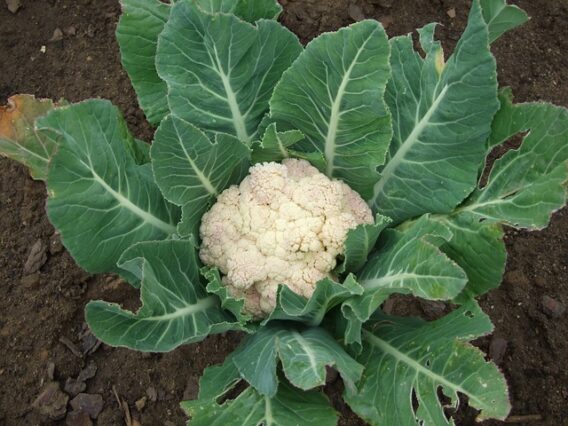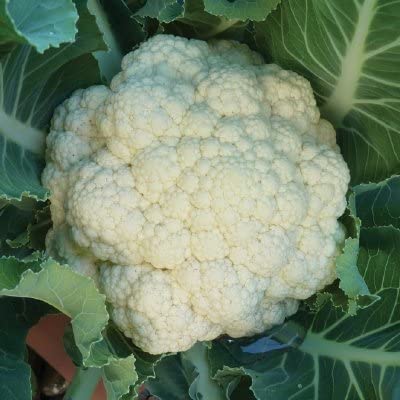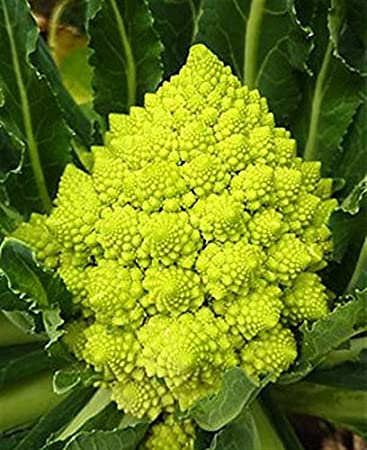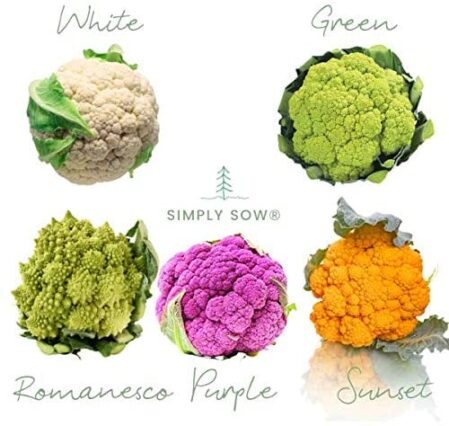Cauliflower is a tasty addition to the home grown table and, although they do require a bit of room, they are a worthwhile crop to grow.

Cauliflowers are great as as an all round accompaniment to boiled veg side dishes, but are a tasty ingredient in may recipes. Cauliflower florets hold their texture and shape well during cooking, so are good for adding to curries and soups. You can also use them to make low calorie ‘cauliflower rice’, or add them to pickles and chutneys.
Cauliflower varieties are grown for harvest in summer and autumn.
Growing Summer Cauliflowers
Summer Cauliflower – sow seeds in trays or modules, undercover, in February.
Harden off the seedlings by putting them outside for periods of time so they get used to the temperature, before planting out in early April.
Summer cauliflowers are usually ready for harvesting in mid-summer.
Growing Autumn Cauliflowers
For autumn harvest varieties of cauliflower, sow seeds in trays or modules in May, and plant outside in June.
Autumn varieties will be growing throughout the hottest of summer days, so partial shade will help keep the plants in a healthy condition.
Autumn cauliflower are ready for harvesting in October and November.
Cauliflower Varieties
There are all sorts of varieties of cauliflower, from the traditional white headed to the intricate Romanesco. There are also brightly coloured varieties.
Planting Cauliflowers
Choose a sunny, sheltered position and dig in plenty of organic matter, such as well-rotted manure or garden compost.
Cauliflowers like a firm soil, so any soil preparation must be done well in advance to allow it to settle before planting.
Caring for Cauliflower Plants
Seedlings of both summer and autumn varieties of cauliflower can be planted outside when they have 3 or 4 adult leaves. Make sure the soil is firm before planting.
They should be spaced approximately 18 inches apart to allow them room to mature.
Cauliflowers benefit from a mulch applied to the soil. It helps to suppress weeds and keep moisture in the soil.
Feed growing cauliflowers every month with a nitrogen rich feed, and keep them well watered in dry weather.
Like cabbages, cauliflowers can be prone to wind damage. Bring the soil up the base of the plant to give it extra support.
As the heads, or curds, grow, they can begin to turn green. To help prevent this, fold some of the larger leaves around it to protect it from direct sun.
Mats put on the soil at around the stem of the cauliflower plant will help stop cabbage root fly, and a mesh net will prevent the cabbage white butterfly from laying eggs on the leaves, so there will be less caterpillars munching on them!
Harvesting and Storing Cauliflowers
Cauliflowers are ready to harvest when the heads are approximately 6 inches wide.
Freshly picked, they store for a week or so in a cool place. Cauliflowers do freeze well but can lose the crisp texture.
Grow more fruit an veg at home. A-Z Growing Guide



